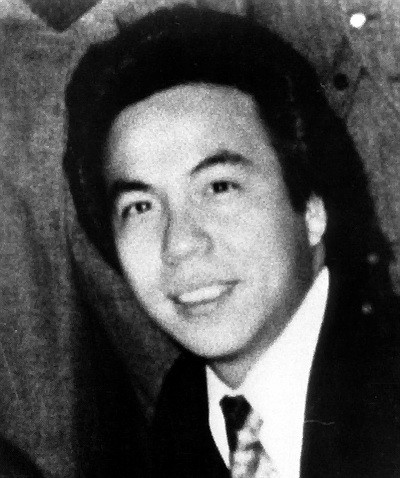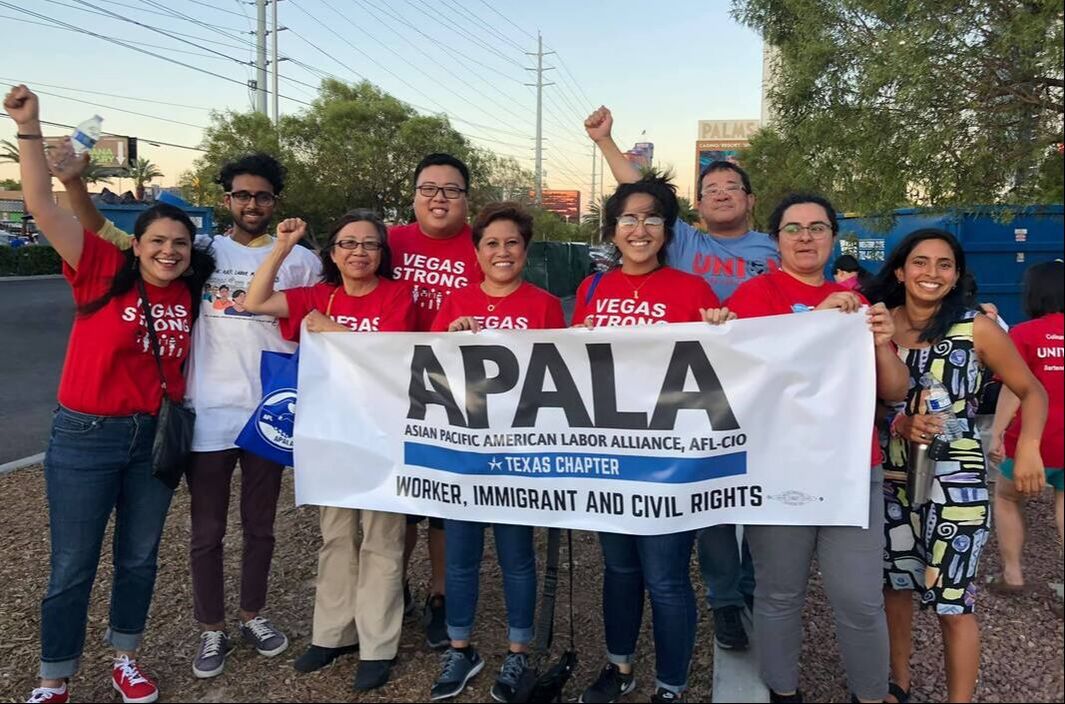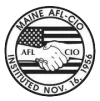APALA Executive Director Discusses Combating Anti-Asian Hate From New Home in Maine

We are pleased to welcome Sandra Engle, a retired UAW organizer and current Executive Director of the Asia Pacific American Labor Alliance (APALA), to her new home here in Maine. After living in Michigan for over two decades, Engle sought to live closer to the ocean in a less crowded environment. She settled on the small Waldo County town of Montville and moved there in June.
“It’s hard to describe how different it is here from every other place I’ve lived. It’s stunning and we have great neighbors,” said Engle. “The people here are really down to earth and care about the land and each other. I come from a place where activism is pretty intense and it’s pretty high. Here it’s like just the fabric of who we are.”
Engle has spent her career organizing workers, advocating for people with few resources and fighting for racial justice. She currently serves as the Interim Executive Director of the Asian Pacific American Labor Alliance (APALA), a constituency group of the AFL-CIO. Founded in 1992, APALA is the first and only national organization of Asian American and Pacific Islander (AAPI) workers. It has more than 22 chapters and pre-chapters and a national office in Washington, D.C.
After graduating law school in 1992, Engle got her first taste of labor activism as a unionized attorney with the Legal Aid Society of New York City. As a member of UAW Local 2325, the oldest union of lawyers in the country, she gained an understanding of worker power and how to fight back against the economic disparities she witnessed daily in her career. When Engle and her union brothers and sisters went on strike in 1994, former New York City Mayor Rudy Giuliani fired the legal aid workers, drawing inspiration President Reagan’s firing of striking air traffic controllers in 1981.
“It was one of those things I was like, ‘That was my job and I have a right to strike and you can’t punish me for that,’” said Engle, who became Vice President of Local 2325. "So I became super active in my union in that strike because I felt this weird, unexpected, protective feeling about my local and what we were doing. It made me want to get more involved and figure out more strategies to push back.”
After getting burned out handling criminal appeals cases, Engle took a leave of absence and got a job at AFL-CIO doing strategic research to support workers organizing. She traveled around the country working with multiple unions including the UAW, IAM, USW and AFGE on organizing campaigns. Eventually, she became a staffer in the UAW’s Organizing Department. While working at the UAW she was appointed to a position on the APALA board. Engle is half Japanese, but she had never worked in areas with high numbers of Asian American/Pacific Islander (AAPI) people, so she didn’t have much experience organizing AAPI workers until she joined the APALA board.
“Then I started to understand what the power of representation means,” said Engle. “You can have a lot of supporters, a lot of allies, a lot of people who will stand with you but no one can articulate your story the way you can. It’s so important to have that representation at the table, whether it’s at the bargaining table or labor staff. It’s really important to see faces that look like you and hear stories that sound like your story.”
Engle became passionate about creating pathways for other AAPI union members to become activists, to grow in their leadership and to communicate their stories to the rest of the labor movement.
“The contribution AAPI workers have made to our labor history. It is not a small footnote,” she said. “They contributed to battles that benefitted everybody.”
The History of Anti-Asian Hate in the Labor Movement

PHOTO: Vincent Jen Chin (1955–1982), a Chinese American man who was murdered by two autoworkers in Highland Park, Michigan in 1982.
It's an uncomfortable truth that Asian American workers have historically been the target of racism by the labor movement, most glaringly in Labor’s support for the 1882 Chinese Exclusion Act, which banned Chinese workers from entering the United States. One of its most prominent backers was Maine Congressman and Granite Cutters International Union Secretary Thompson Murch, perhaps the first union leader elected to Congress. During the recent covid pandemic, Asian Americans were once again the target of racism and violence due to xenophobic political rhetoric that blamed China for the virus.
The UAW has historically and currently been at the forefront of anti-racist organizing, from the days of the CIO in the 1930s to taking a leading role in the Civil Rights Movement, but UAW members also played a role in stoking anti-Japanese hatred that led to the 1982 murder of Chinese-American Vincent Chin by Chrysler supervisor Ronald Ebens and his stepson, laid off autoworker Michael Nitz, in Detroit.
In 2022, Engle started a dialogue within the UAW about what inspired the racially motivated attack. At the time, the auto industry was in a recession triggered by an oil crisis. Thousands of auto workers had been laid off as consumers bought more fuel efficient vehicles. But instead of blaming the company for not anticipating market changes and building more fuel efficient vehicles, they blamed the Japanese car makers for outcompeting US companies. As Engle noted, a “culture of anti-Asian bigotry” festered in Detroit as bumper stickers, T-shirts and posters “drove the point home to autoworkers: your economic insecurity is caused by the Japanese.”
“Some auto plant walls displayed graphics featuring stereotyped buck-toothed Japanese taking American jobs (it is worth noting that this same type of vitriol didn’t get expressed at German Americans, despite growing market shares for Volkswagen, Daimler, and BMW),” she wrote. “Slurs like ‘Jap’ and ‘Chink’ flowed like water on many shop floors. These were not closeted acts of bigotry — they were displayed proudly at Labor Day parades and on t-shirts worn to UAW events. And this hatred was not limited to UAW members — other members of other unions and even auto management joined in bigotry.”
Engle pointed out that Chin was an American citizen and worked as an industrial draftsman at an engineering firm in the same auto industry where Nitz and Ebens worked. But all they knew about Chin was “the shape of eyes. That was enough to make Chin pay.”
Engle said that another issue her organization deals with is the “model minority” myth, which perpetuates a stereotype that Asian Americans are harder working, more studious and more successful than black and brown people.
“I think that’s very harmful because all communities have the same challenges so it’s a sweeping generalization that diminishes the pain that exists sometimes and the support that communities need,” said Engle. “It’s also designed to pit people against each other, to say ‘we like this group, but not that group.’ The truth is at the end of the day they don’t like any of us.”
Countering Racism in the Workplace
Engle says her group strives to help workers focus on the real source of their economic insecurity, rather than other workers of different races and ethnicities who are also being exploited.
“With trade agreements we’re mad about policies and the corporations that paid to shove them through to exploit workers in other nations,” she said. “That’s what we’re mad about but it gets translated to being mad at Mexicans, Asians and Chinese, who are people, not a policy.”

Texas chapter members march in support of Culinary Workers Union Local 226, while attending the 15th Biennial APALA Convention in Las Vegas. Aug 9, 2019. Photo courtesy of APALA.
She says one mistake people make when trying to counter prejudice is to barrage the other side with data points and studies. However, people are generally more often moved by emotions than facts. Engle says it's critical to understand that racism is spread out of fear and is perpetuated by powerful people whose only interest is to grab more wealth and power for themselves.
Engle says the most effective way to address racism and xenophobia is to approach it like an organizing conversation. Focus on “deep listening,” she advises, because it signals to the person that you’re interested in their experiences and what they have to say.
"It doesn’t mean you agree with them, but that you’re interested and that they have a right to their opinion, even if might be harmful,” said Engle. “You have to recognize that these opinions don’t go away just because you want them to. They have to let them go.”
The goal, she says, is to build a bridge with the person to help them see that they have more community with you than the people who are whispering hateful rhetoric in their ear.
“The tool that the other side uses very effectively is to totally demonize us in very personal terms,” she said. “They do that because they’re really trying to destroy trust.”
Engle said she has seen first-hand how these kinds of conversations have moved people, but that too often in the labor movement we are too focused on talking about how great we are. We become like sales people rather than organizers.
“That’s not organizing and it’s not a way to effectively move someone,” she said. “So figuring out how to pull back on that instinct and practice listening is a challenge. It takes work and you have to practice it, but it’s really powerful when it happens.”
Engle says she is excited about meeting more people in Maine’s labor movement and getting involved in our local chapter of the A. Philip Randolph Institute, another constituency group of the AFL-CIO for people of color and their allies.
'I’ve been very excited and impressed by what I’ve seen in Maine in terms of the labor movement and I’m here to learn from you all about your successes,” she said.
